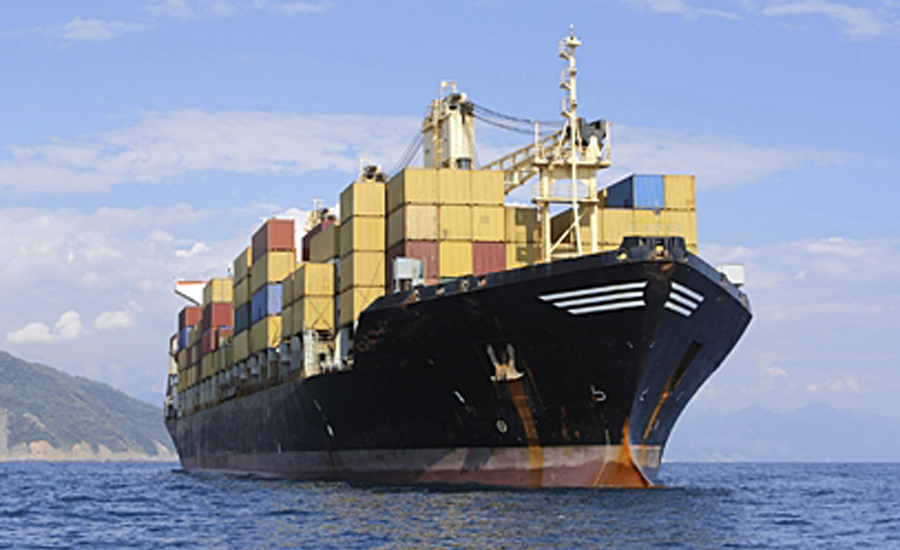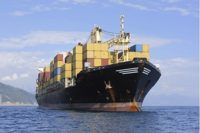Aggressively deploying zero and near-zero emission trucks and cargo handling equipment and expanding programs that reduce ship emissions are among the core strategies the Ports of Los Angeles and Long Beach are proposing for the next version of San Pedro Bay Ports Clean Air Action Plan (CAAP).
Proposals also focus on freight infrastructure investment, innovation and technology to improve supply chain efficiency, comprehensive energy planning and increased advocacy for stricter emissions standards and government incentives to help pay for projects that advance testing and commercialization of zero and near-zero emission vehicles.
The Discussion Document prioritizes reducing greenhouse gas (GHG) emissions from port-related sources 80% below 1990 levels by 2050. The target aligns with California’s clean air goals and objectives in the state’s new Sustainable Freight Action Plan, as well as efforts by the cities of Los Angeles and Long Beach to shrink GHG emissions ahead of state targets. Cutting GHG emissions also helps the ports maintain and increase their progress in reducing other key pollutants, namely diesel particulate matter (DPM), nitrogen oxides (NOx) and sulfur oxides (SOx).
Developed with input from industry, government, community and environmental stakeholders, the Discussion Document also recommends a new suite of incentives, lease requirements and regulatory approaches to achieve CAAP goals. They include the following near- and long-term proposals grouped under the categories below:
Clean vehicles, equipment technology and fuels:
- Phase in clean engine standards for port trucks and offer preferential terminal access to green trucks, to transition to a zero-emission drayage fleet by 2035.
- Reduce idling and transition to zero-emission yard equipment by 2030.
- Update the Vessel Speed Reduction Program, expand the use of state-approved alternative technologies to reduce at-berth emissions, incentivize clean technology upgrades on ships and encourage carriers to deploy their cleanest vessels to the San Pedro Bay ports.
- Accelerate deployment of cleaner harbor craft engines.
Freight infrastructure investment and planning:
- Expand use of on-dock rail by investing in improvements to the port-wide rail network, with the long-term goal of moving 50% of all inbound cargo leaving the ports by rail.
- Develop charging standards for electric cargo handling equipment.
Freight efficiency:
- Create a voluntary Green Terminal Program to recognize terminal operators achieving high levels of freight movement efficiency.
- Continue to explore short-haul rail, staging yards, truck appointment systems, off-terminal queuing, intelligent transportation systems and other strategies for enhancing efficiencies across the supply chain.
Energy resource planning:
- Develop infrastructure plans to support terminal equipment electrification, alternative fuels and other energy resource goals.
- Continue to develop and implement viable energy conservation, resiliency and management strategies under the Port of Los Angeles Energy Action Management Plan and the Port of Long Beach Energy Initiative.
CAAP 2017 improves upon the initial plan adopted in 2006 and updated in 2010 to reduce emissions from all port-related sources, including ships, trucks, trains, cargo handling and smaller harbor craft, such as tugboats.
One original strategy is the Technology Advancement Program (TAP), created to accelerate the development and demonstration of cutting-edge emission reduction technology. To date, the ports have invested $15 million in 35 TAP projects. TAP successes include emission capture systems for ships at berth, hybrid-electric rubber tire gantry cranes and drayage trucks and yard tractors fueled by liquefied natural gas, which are all now commercially available. The investment to date includes funding for zero and near-zero emission truck and yard tractor demonstration projects already in progress.
Under the CAAP, the ports of Los Angeles and Long Beach have reduced DPM up to 85%, cut NOx in half, eliminated 97% of SOx and lowered GHG an average of 12%, all while container volume increased by 7%. The results reflect the ports’ combined clean air progress in collaboration with industry, regulatory, community and environmental partners since 2005. The findings also show the ports continue to exceed their 2023 targets for reducing DPM and SOx (77% and 93%, respectively) and are closing in on their 2023 target of reducing NOx emissions 59%.
“We’ve made undeniable gains in improving air quality over the last 10 years,” says Lori Ann Guzmán, president of the Long Beach Board of Harbor Commissioners. “We thank our partners in the goods movement industry for their contributions, and we’re looking forward to public input to make this the best update possible.”


